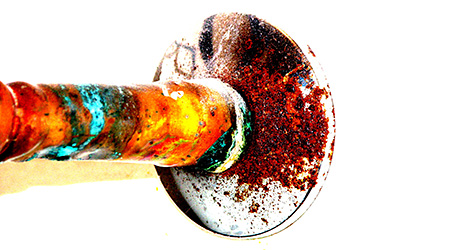What Common Interior Items Are Inspected In A Home Inspection?

The interior of a property is just as important during a home inspection as the exterior. There are a number of different issues which can be costly to repair for a new homeowner. A qualified and licensed home inspector will use an interior checklist and the process takes about an hour to an hour and a half to thoroughly examine the premises. It's not as simple as flipping a couple of light switches, turning on a few faucets and running the heater to pass a home inspection. The following are common interior items which are inspected in a home inspection
Ceiling
While exterior structural integrity and damage may already have been evaluated, many of those same issues carry over to the interior. Obvious signs of water damage in the ceiling will result from water leaking through holes in the roof or down vent pipes. An inspector will also evaluate the rafters for stability and proper construction. A note will also be made on the amount of ceiling insulation and whether or not it is sufficient and meets building code requirements.
Plumbing
When plumbing is evaluated during home inspection there are two primary areas of focus. The first is to ensure that all sinks, toilets and showers are in proper working order including water pressure and draining. The second is to look for signs of water leakage in any pipes running through the interior such as under the sink or in crawlspaces. The inspector may also note the age of the plumbing, its type such as Pex or copper and whether or not repair or replacement is necessary.
Electrical
The electrical part of the home inspection includes the obvious testing of light switches, light fixtures and electrical outlets to ensure they are working. It also includes examining the circuit breaker box for proper breaker sizes and wiring the home into the appropriate number of zones. The inspector will keep an eye out for electrical fluctuations, buzzing or other interference and if any circuit breakers are triggered during normal use.
Infestation
Normally, if there are no signs of insect or pest infestation on the exterior then the interior will be clear as well. Types of pests a good home inspector keep an eye out for are cockroaches, silverfish, termites, carpenter ants, mice and rats. Each of these pests may exist for different reason related to the home itself or its current occupants. The inspector will note on a home inspection checklist the level of damage involved which is crucial when evaluating repair costs and negotiating a final sale price.
Appliances
Testing appliances during a home inspection may not be necessary depending on whether or not they are sold with the home. It is common for many existing homeowners to leave appliances in place as an incentive to attract potential buyers and to assist in closing a sale. If the appliances stay with the home then each one will be tested individually to ensure proper working order. The refrigerator will be evaluated for temperature, dishwasher for water leakage and the oven and range for proper temperature.
Structural
Structural analysis during a home inspection includes checking for cracks in the ceiling and walls and testing all doors. It's fairly obvious if there is a problem with the foundation or framing as cracks will be evident and many doors will have problems opening and closing freely. Structural deficiencies due to improper settling may also create problems in the plumbing and electrical systems as well as the roof. Any structural issues should be considered a deal breaker for potential home buyers.
HVAC
No home inspection would be complete without testing the heating, ventilation and cooling system installed in the house. The ducting will be examined to ensure all joints are sealed properly limiting air leakage. The thermostat will be turned on and off repeatedly verifying that it functions both manually and automatically as it was designed. The unit itself will also be evaluated to ensure it is installed properly and that there is minimal wear and tear.
Elsewhere on StockMonkeys.com







